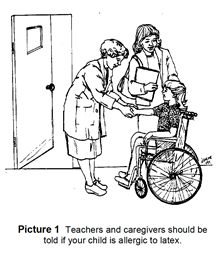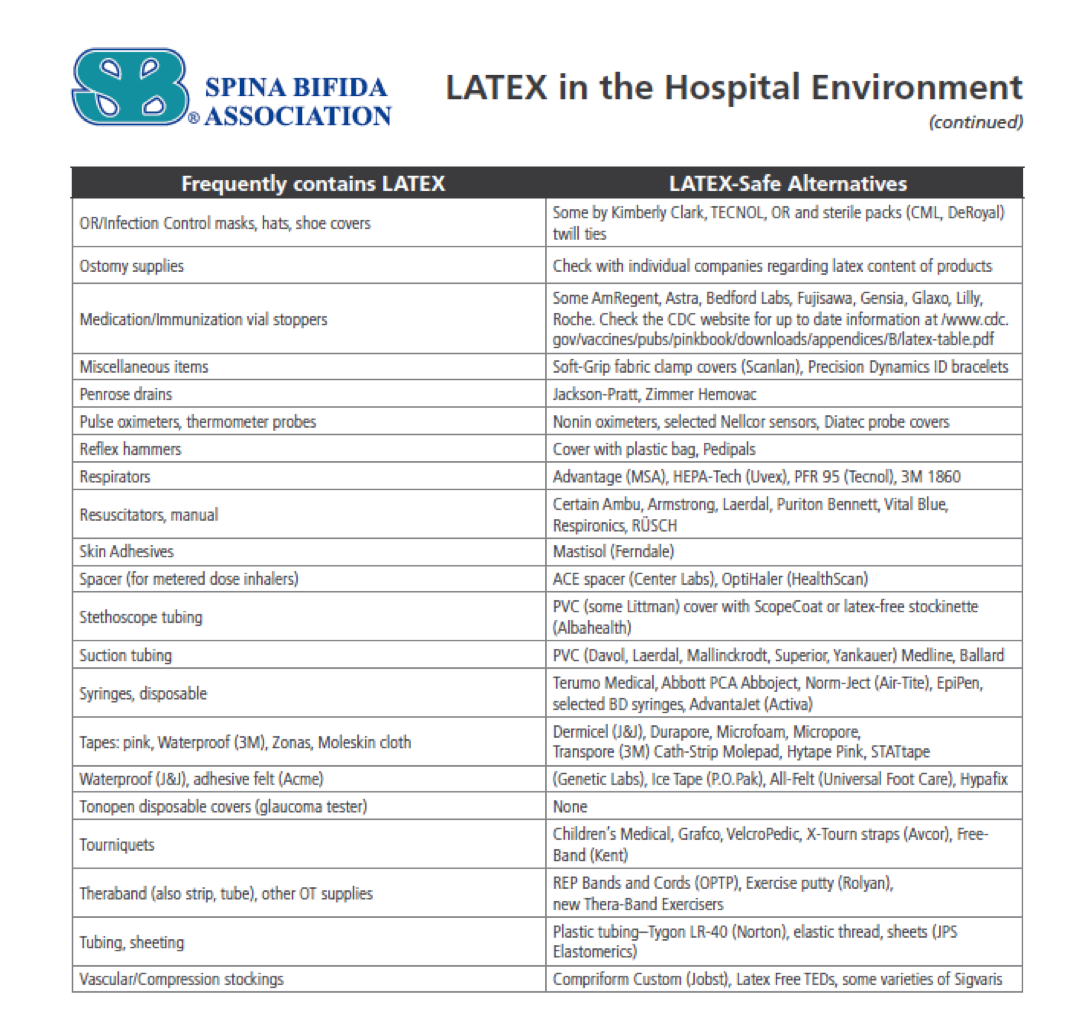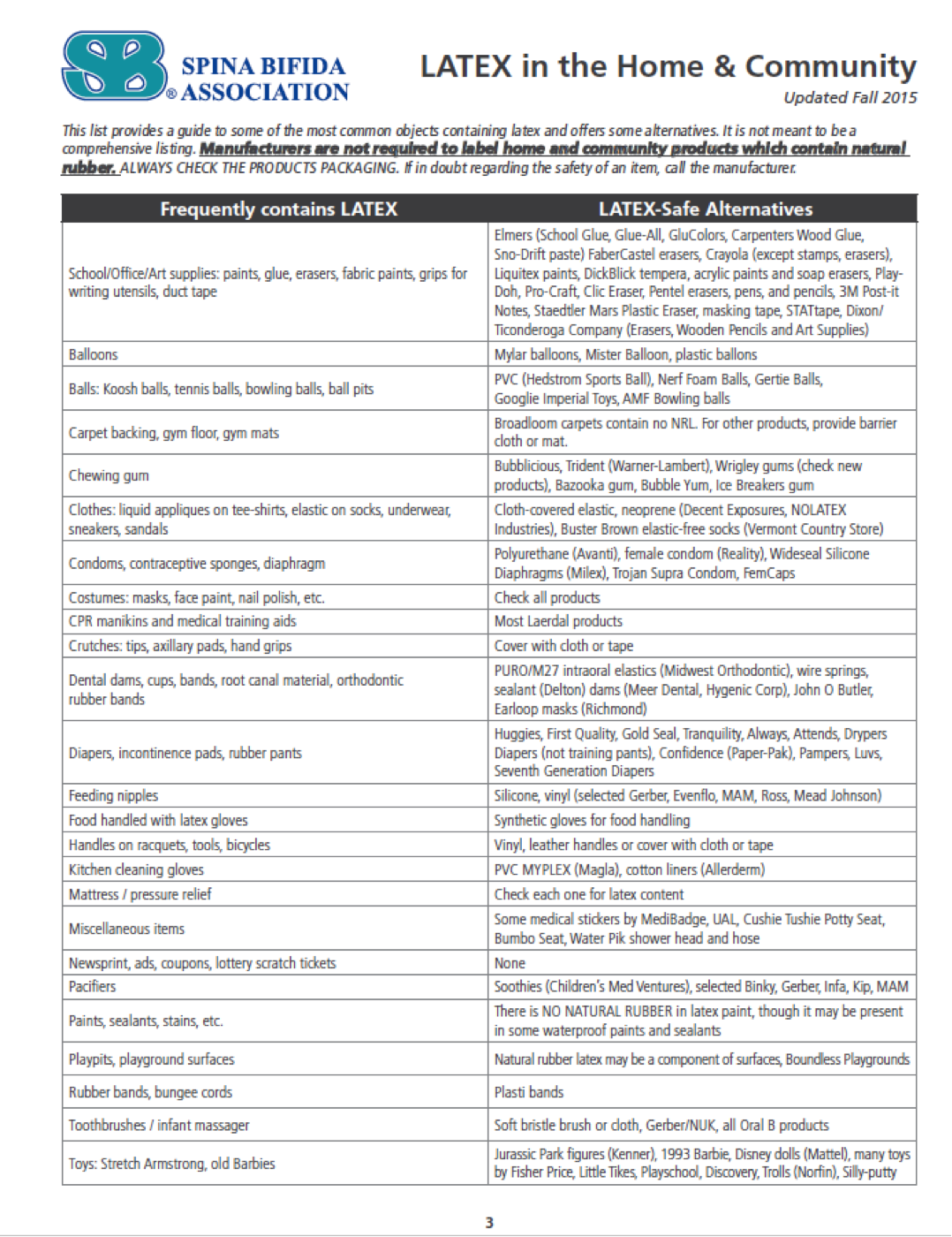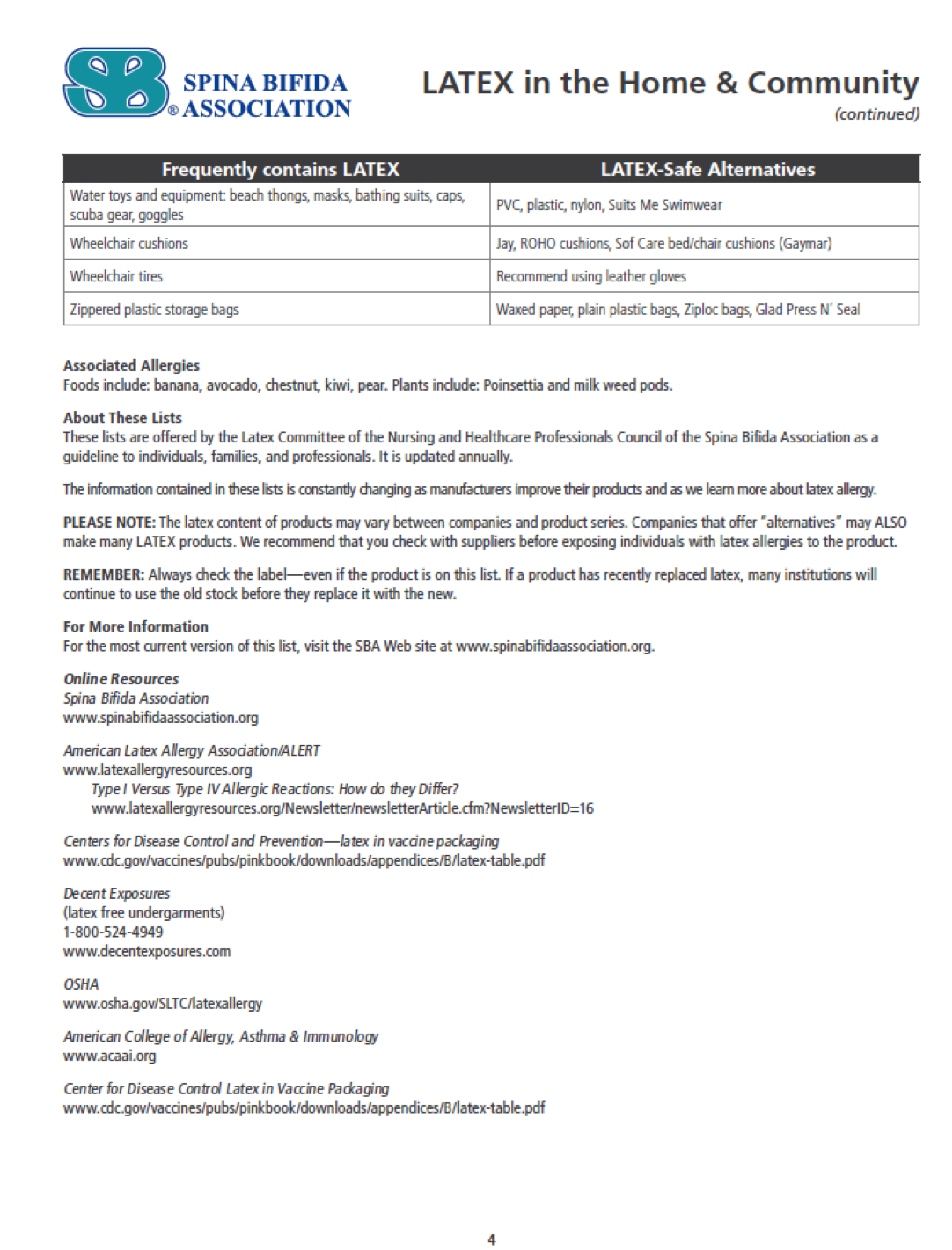Allergy to Latex

Latex is the milky sap from the rubber tree. It is used to make many rubber products that are used in the hospital, home and community. If your child is allergic to this milky sap, he or she has a latex allergy.
A child who has an allergy to latex will always be allergic to it.
Some of the most common products made from latex are latex gloves and rubber balloons. A list of many other items made from latex is on pages 3 to 6.
Who Can Become Allergic to Latex?
Anyone can become allergic to latex, but some people are at higher risk. These include:
- People with spina bifida or myelomeningocele
- Those who have other allergies (especially people who are allergic to avocados, bananas, kiwi, or water chestnuts).
- Those who have had frequent exposure to latex.
- Health care workers
The cause of a latex allergy is not known. Some experts believe latex allergies occur more often in patients with spina bifida because they have frequent contact with latex products. Children with spina bifida have many surgeries, diagnostic tests, and bowel and bladder programs that involve using latex products.
Signs of an Allergic Reaction
- Skin rash or scaliness
- Itching
- Hives
- Swelling
- Itchy, watery or puffy eyes
- Sneezing or coughing
- Wheezing
- Difficulty breathing
- Anxiety
- Rapid heartbeat (palpitations)
Common Products that Contain Latex

- On pages 3 to 6 are products that contain latex and suggested substitutes. Be sure to read the labels.
- Ask the pharmacist or manufacturer to suggest substitutes if you do not see the product on the LATEX-SAFE list.
Ways to Avoid an Allergic Reaction
- Avoid products that contain latex.
- Reducing your child's exposure to latex may help prevent an allergic reaction.
- Tell all of your child's care givers about his or her latex allergy risk (Picture 1). This includes hospitals, doctors, nurses, dentists, schools, day care workers, baby- sitters, and your local emergency services.
What to Do in an Emergency
- Remove the object causing the allergic reaction as soon as possible.
- If your child has a rash, itching or hives, call your doctor.
- If your child has any wheezing or trouble breathing, call for emergency help right away. Call 9-1-1 or your local fire department.
- If you have an EpiPen, use it as directed by your doctor or nurse.
Other Tips and Advice
- Your child’s doctor may suggest that you buy a Medic Alert ID bracelet or necklace for your child. Your local pharmacy can tell you where to get one.
- Ask your child's doctor or nurse if your child needs to carry an EpiPen (injectable emergency medicine). (See Helping Hand HH-V-122, Epinephrine Autoinjector Pens.)
- For more information on latex, refer to the Spina Bifida Association of America website at www.spinabifidaassociation.org.
- Contact purchasing or materials management for questions on specific latex-containing items within Nationwide Children’s Hospital.
If you have any questions, be sure to ask your doctor or nurse.




HH-I-189 5/96, Revised 11/16 Copyright 1996 Nationwide Children’s Hospital


